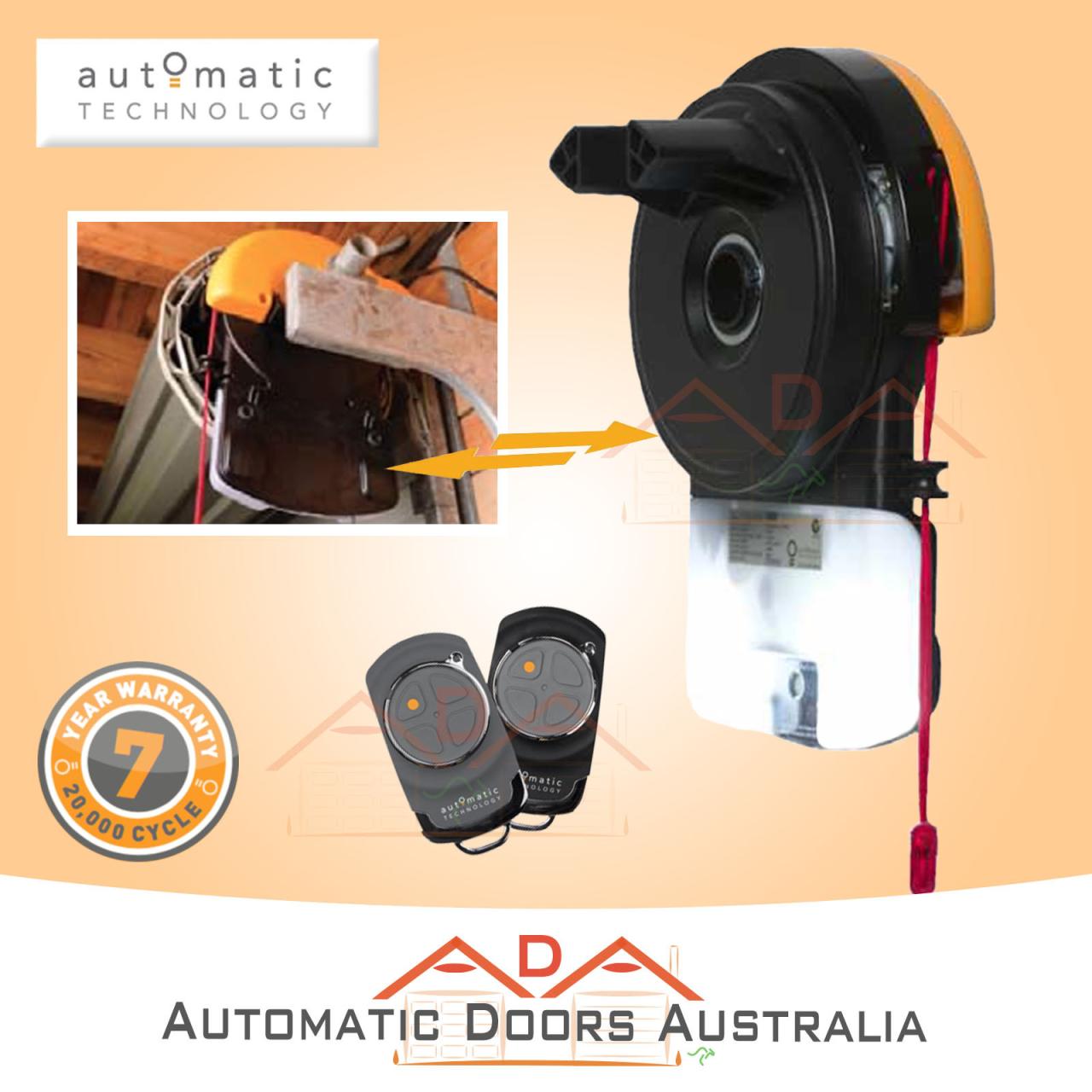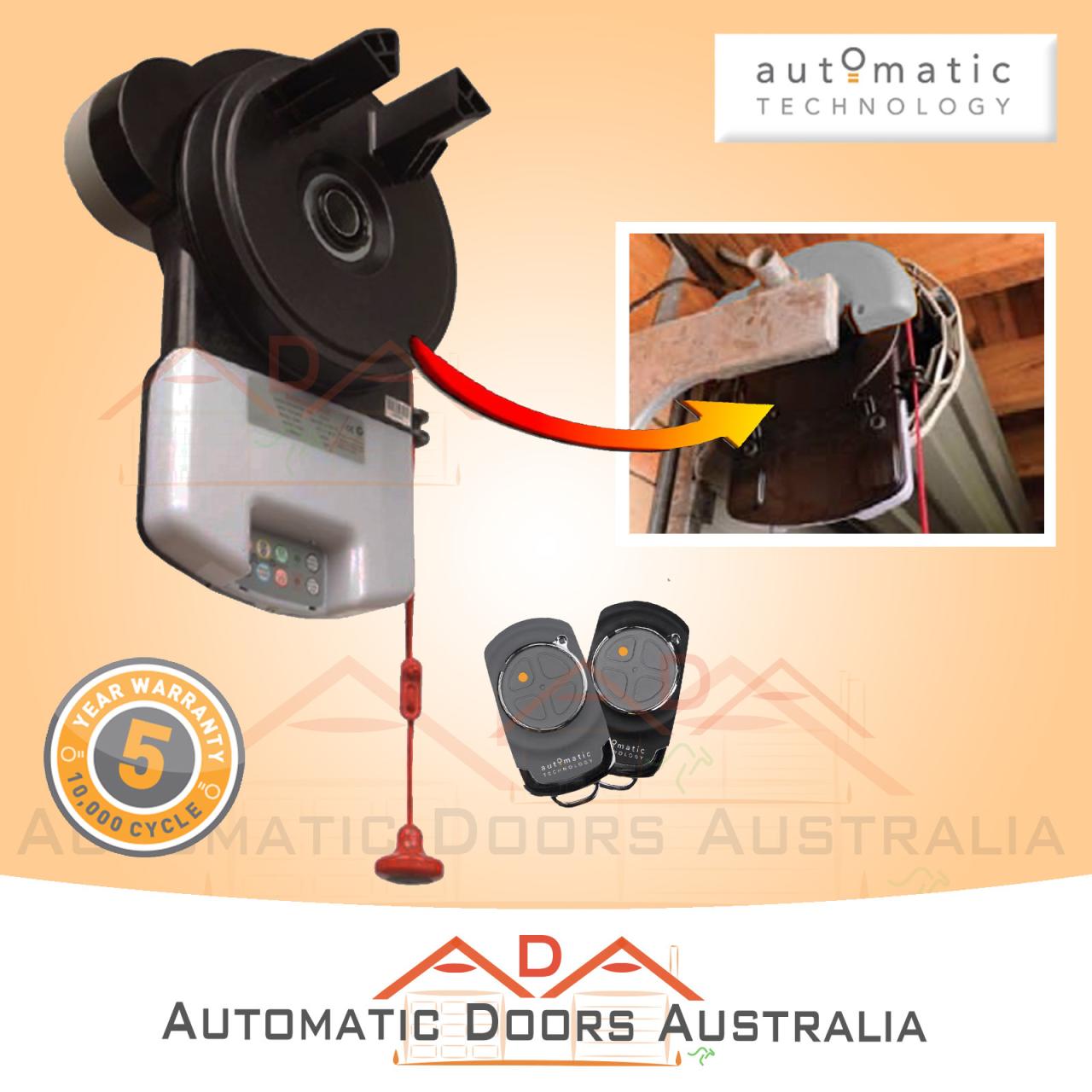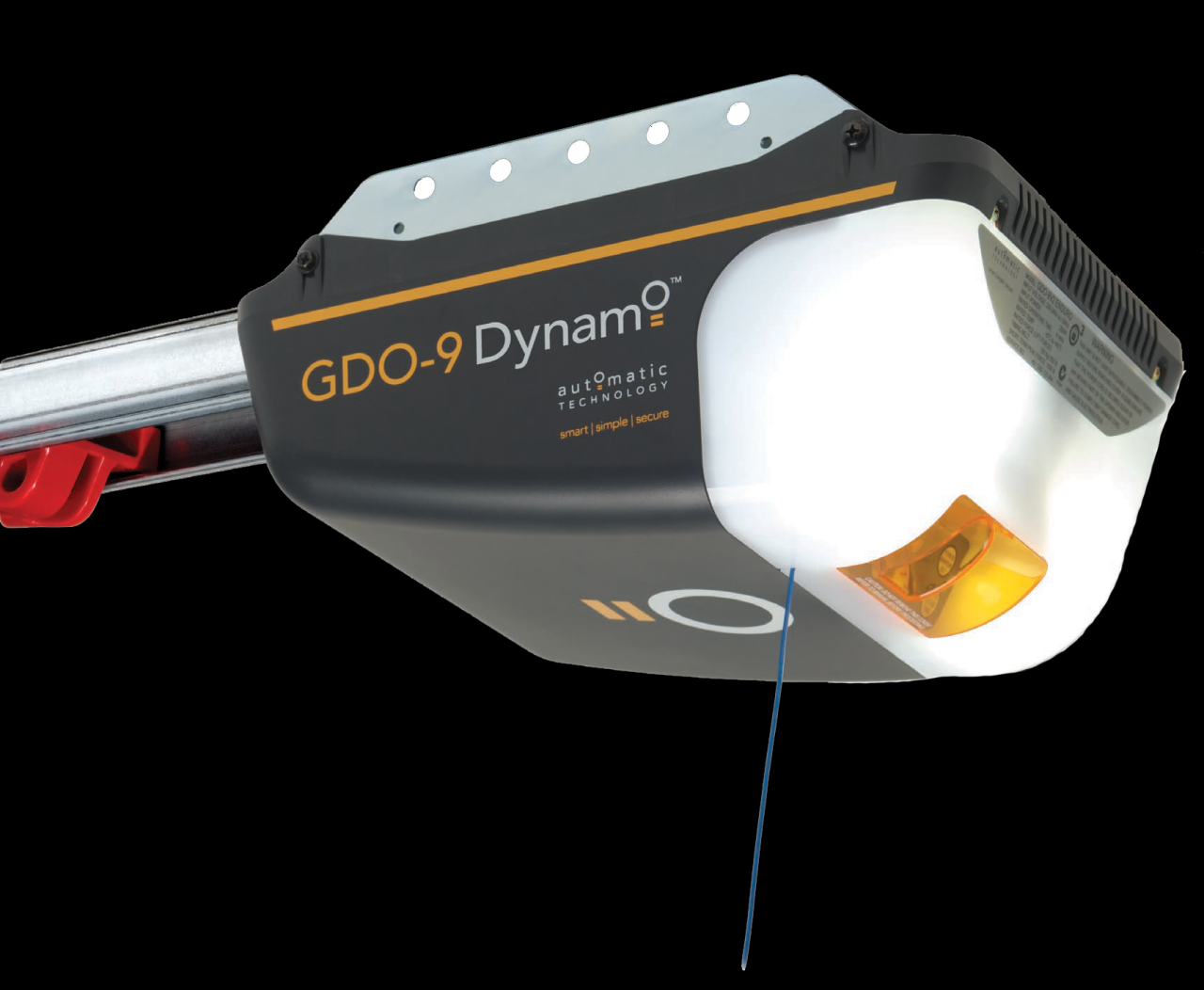Automatic Technology Garage Door Openers: Convenience and Security
Automatic technology garage door openers have revolutionized the way we access our homes and businesses, providing convenience, security, and peace of mind. These innovative devices have evolved significantly over the […]

Automatic technology garage door openers have revolutionized the way we access our homes and businesses, providing convenience, security, and peace of mind. These innovative devices have evolved significantly over the years, from simple mechanical systems to sophisticated smart home integrations.
Garage door openers utilize a variety of technologies to automate the opening and closing process, ranging from chain drives to belt drives and screw drives. Each type offers distinct advantages and disadvantages in terms of noise levels, speed, and durability.
Introduction to Automatic Garage Door Openers

Automatic garage door openers are convenient and essential devices that make opening and closing your garage door effortless. They are powered by electric motors and controlled by a remote control or a wall-mounted button. Automatic garage door openers have become a standard feature in many homes, enhancing security and convenience.
History of Automatic Garage Door Openers
The first automatic garage door opener was invented in 1926 by C.G. Johnson. This early model used a chain drive system to lift and lower the door. It was bulky and required significant manual effort to operate. Over the years, automatic garage door openers have evolved considerably, becoming more efficient, reliable, and user-friendly. The introduction of electric motors, remote controls, and safety features has significantly improved their functionality and safety.
Basic Principles of Operation
Automatic garage door openers operate based on a simple yet effective principle. They utilize an electric motor to power a drive mechanism that moves the garage door. This mechanism is typically a chain, belt, or screw drive system. When you press the button on the remote control or the wall-mounted button, a signal is transmitted to the opener’s receiver. The receiver activates the motor, which then drives the mechanism to open or close the door.
The operation of an automatic garage door opener can be broken down into the following steps:
- Signal Transmission: When you press the button on the remote control or the wall-mounted button, a radio signal is transmitted to the opener’s receiver.
- Receiver Activation: The receiver decodes the signal and activates the motor.
- Motor Operation: The motor starts rotating, driving the chain, belt, or screw drive mechanism.
- Door Movement: The mechanism moves the garage door up or down, depending on the direction of the motor’s rotation.
- Safety Features: As the door moves, safety features such as photo eyes and reverse mechanisms ensure safe operation.
Types of Automatic Garage Door Openers
Automatic garage door openers are available in various types, each with its own unique mechanism and set of advantages and disadvantages. Understanding the different types will help you choose the best opener for your needs and budget.
Types of Automatic Garage Door Openers
Automatic garage door openers are broadly categorized based on their drive mechanism. The most common types include chain drive, belt drive, and screw drive openers.
- Chain Drive Openers: Chain drive openers are the most traditional and widely used type. They use a metal chain to connect the motor to the garage door.
- Belt Drive Openers: Belt drive openers utilize a reinforced rubber belt instead of a chain. This makes them quieter and smoother than chain drive openers.
- Screw Drive Openers: Screw drive openers use a threaded steel rod to lift the garage door. They are known for their powerful operation and durability.
Comparison of Automatic Garage Door Opener Types, Automatic technology garage door opener
The following table summarizes the key features and specifications of different types of automatic garage door openers:
| Feature | Chain Drive | Belt Drive | Screw Drive |
|---|---|---|---|
| Noise Level | Loudest | Quietest | Moderate |
| Speed | Moderate | Fast | Moderate |
| Durability | High | Moderate | High |
| Cost | Most Affordable | More Expensive | Most Expensive |
| Maintenance | Moderate | Low | Low |
Pros and Cons of Different Types of Openers
Chain Drive Openers
- Pros: Chain drive openers are the most affordable option and offer high durability. They are also relatively easy to install and maintain.
- Cons: Chain drive openers are the noisiest type, which can be a concern for those living in close proximity to their garage. They can also be slightly slower than other types of openers.
Belt Drive Openers
- Pros: Belt drive openers are known for their quiet operation and smooth performance. They are also generally faster than chain drive openers.
- Cons: Belt drive openers are more expensive than chain drive openers and may have lower durability. They can also be more challenging to install and maintain.
Screw Drive Openers
- Pros: Screw drive openers are powerful and durable, making them a good choice for heavy garage doors. They are also relatively quiet and offer smooth operation.
- Cons: Screw drive openers are the most expensive type and can be more challenging to install than other types.
Features and Benefits of Automatic Garage Door Openers
Automatic garage door openers offer a range of features that contribute to convenience, security, and energy efficiency. These features enhance the functionality of your garage door and contribute to a safer and more comfortable living environment.
Convenience
Automatic garage door openers significantly enhance convenience by eliminating the need for manual operation. They allow you to open and close your garage door with the push of a button, from the comfort of your car or even your smartphone.
- Remote Control: Most automatic garage door openers come with remote controls, allowing you to open and close your garage door from a distance. This eliminates the need to physically reach for the door handle, especially during inclement weather. Remote controls typically operate on radio frequencies, providing a reliable connection within a certain range.
- Keyless Entry: Some advanced automatic garage door openers offer keyless entry features, allowing you to open your garage door using a code or a mobile app. This eliminates the need for physical keys, providing an additional layer of security and convenience.
- Smartphone Integration: Many modern automatic garage door openers are compatible with smartphone apps, enabling you to control your garage door remotely from anywhere with an internet connection. This feature allows you to check the status of your garage door, open or close it, and even set schedules for automatic operation.
Safety Features
Automatic garage door openers prioritize safety with features designed to prevent accidents and protect people and property.
- Safety Sensors: Safety sensors are crucial components of automatic garage door openers. They are typically installed on both sides of the garage door and detect any obstruction in the path of the door as it closes. If an object or person is detected, the door will automatically reverse, preventing injury or damage.
- Automatic Reverse: Automatic garage door openers are equipped with an automatic reverse mechanism. If the door encounters resistance during closing, it will automatically reverse, ensuring that no objects or people are trapped. This feature is essential for safety, particularly for children and pets who may be in the garage.
- Emergency Release: In the event of a power outage or malfunction, automatic garage door openers have an emergency release mechanism. This allows you to manually open and close the garage door using a cord or handle located near the door.
Energy Efficiency
Automatic garage door openers can contribute to energy efficiency by minimizing heat loss and improving insulation.
- Proper Sealing: Automatic garage door openers often come with weatherstripping that helps seal the gaps around the door, preventing drafts and reducing heat loss during the winter months. This can contribute to a more comfortable and energy-efficient home.
- Insulated Doors: Automatic garage door openers are compatible with insulated garage doors. Insulated doors provide an extra layer of thermal protection, reducing heat transfer and improving energy efficiency.
Home Automation
Automatic garage door openers can seamlessly integrate with home automation systems, enhancing convenience and security.
- Smart Home Hubs: Many automatic garage door openers are compatible with popular smart home hubs, such as Amazon Alexa, Google Assistant, and Apple HomeKit. This integration allows you to control your garage door using voice commands or through your smart home app.
- Remote Monitoring: With home automation integration, you can remotely monitor the status of your garage door, receive notifications about door activity, and even set schedules for automatic opening and closing.
- Security Integration: Some automatic garage door openers can be integrated with security systems, providing an extra layer of protection for your home. If your security system detects an intrusion, the garage door can be automatically closed, preventing unauthorized access.
Installation and Maintenance of Automatic Garage Door Openers
Installing and maintaining your automatic garage door opener is crucial for ensuring its smooth operation and your safety. Regular maintenance can prevent unexpected breakdowns and extend the life of your opener.
Installation of Automatic Garage Door Openers
Installing an automatic garage door opener requires some basic tools and technical skills. Here’s a step-by-step guide to help you get started:
- Prepare the Garage Door: Disconnect the power supply to your garage door. Ensure the door is fully closed and secured.
- Mount the Rail and Motor Unit: Attach the rail to the ceiling, making sure it is level and secure. Mount the motor unit to the wall, ensuring it is positioned correctly for the rail and door.
- Install the Garage Door Opener: Attach the garage door opener to the door using the provided brackets and hardware.
- Connect the Opener to the Door: Attach the opener arm to the door using the provided hardware.
- Set the Travel Limits: Adjust the travel limits on the opener to ensure the door opens and closes to the correct positions.
- Test the Opener: Once everything is installed, test the opener to ensure it operates correctly.
- Connect the Power Supply: Connect the power supply to the opener and test it again.
Safety Precautions During Installation and Maintenance
Safety should be your top priority during installation and maintenance of your automatic garage door opener. Here are some essential safety precautions:
- Disconnect the Power Supply: Always disconnect the power supply to your garage door opener before performing any maintenance or repairs.
- Use Safety Glasses: Wear safety glasses to protect your eyes from flying debris.
- Use Gloves: Wear gloves to protect your hands from sharp edges and tools.
- Avoid Overloading the Door: Ensure the weight of the door does not exceed the opener’s capacity.
- Regularly Inspect the Opener: Regularly inspect the opener for any signs of wear or damage.
- Never Work Under a Raised Door: Never work under a raised garage door, as it could suddenly fall.
Troubleshooting Common Issues with Automatic Garage Door Openers
Automatic garage door openers can experience various issues, but most are easily resolved with a few troubleshooting steps. Here are some common issues and their solutions:
- Door Won’t Open or Close: Check the power supply, the opener’s circuit breaker, and the opener’s motor. Ensure the opener is properly connected to the door and that the travel limits are correctly set.
- Door Opens or Closes Slowly: Check the opener’s motor and belt tension. The motor may be failing or the belt may be worn.
- Door Makes Noise During Operation: Check the opener’s track for any obstructions or misalignment. The opener’s bearings may also need lubrication.
- Remote Control Doesn’t Work: Check the remote control’s batteries and the opener’s receiver. The remote control may need to be reprogrammed.
Choosing the Right Automatic Garage Door Opener: Automatic Technology Garage Door Opener

Selecting the right automatic garage door opener is crucial for ensuring safety, convenience, and long-term reliability. This decision involves considering several factors, including your garage size, door weight, and budget. A well-informed choice will provide you with a smooth and efficient operation for years to come.
Determining Horsepower Requirements
The horsepower of an automatic garage door opener is a critical factor that directly impacts its ability to lift and lower your garage door. Higher horsepower openers are required for heavier doors and larger garages, while lower horsepower openers are suitable for lighter doors and smaller garages.
To determine the appropriate horsepower for your garage door, you can use a simple formula:
Door weight (lbs) / 200 = Horsepower
For example, a 200-pound garage door would require 1 horsepower (200/200 = 1). A 400-pound door would require 2 horsepower (400/200 = 2).
Choosing the Right Opener Based on Usage
The type of automatic garage door opener you choose will depend on your specific usage needs and preferences. Here are some recommendations based on different usage scenarios:
Residential Openers
Residential garage door openers are designed for everyday use in single-family homes. They typically offer a range of features, including:
- Chain-drive openers: These are the most common type of residential opener, known for their durability and affordability. They operate with a chain that moves the door up and down.
- Belt-drive openers: Belt-drive openers are quieter than chain-drive openers and provide a smoother operation. They are also generally more expensive.
- Screw-drive openers: Screw-drive openers are known for their smooth and quiet operation, but they are typically more expensive than chain-drive and belt-drive openers.
Commercial Openers
Commercial garage door openers are designed for high-traffic areas and heavy-duty use. They are typically more powerful than residential openers and often include features such as:
- Heavy-duty motors: Commercial openers require powerful motors to handle the weight and frequency of use in high-traffic areas.
- Increased safety features: Commercial openers often have additional safety features to prevent accidents and ensure smooth operation in high-traffic areas.
- Remote control options: Commercial openers may offer multiple remote control options for easy access and operation.
Security Considerations for Automatic Garage Door Openers
Automatic garage door openers offer convenience and security, but they also present potential vulnerabilities that require attention. Understanding these vulnerabilities and implementing appropriate security measures can help protect your home and belongings from unauthorized access.
Password Security
Strong passwords are essential for safeguarding your garage door opener from unauthorized access. A strong password is at least 12 characters long and includes a combination of uppercase and lowercase letters, numbers, and symbols. It’s crucial to avoid using easily guessable passwords like your birthdate, pet’s name, or common words.
Regular Password Changes
Changing your garage door opener password regularly is a crucial security practice. This helps mitigate the risk of unauthorized access if your password is compromised. Aim to change your password every three to six months, or more frequently if you suspect your password may have been compromised.
Securing Against Hacking
Garage door openers can be vulnerable to hacking attempts, especially if they use outdated technology or have weak security protocols. Here are some tips to secure your garage door opener against hacking:
- Use a Secure Wi-Fi Network: Ensure your home’s Wi-Fi network is password-protected and uses a strong encryption protocol like WPA2 or WPA3. This prevents hackers from intercepting your garage door opener’s signals.
- Update Firmware: Regularly update your garage door opener’s firmware to patch any security vulnerabilities. Firmware updates often include security patches that address known vulnerabilities.
- Disable Remote Access: If you don’t need remote access to your garage door opener, disable it. This reduces the potential attack surface and makes it more difficult for hackers to gain access.
- Use a Separate Network: If you use smart home devices, consider using a separate network for your garage door opener. This helps isolate your garage door opener from other devices and reduces the risk of a compromise spreading to other parts of your network.
Physical Security
Physical security measures are essential for protecting your garage door opener from unauthorized access. Here are some tips for securing your garage door opener physically:
- Install a Strong Garage Door: A sturdy garage door with a solid core and reinforced frame provides a significant barrier against unauthorized entry. Consider using a garage door with a high-security lock.
- Secure the Garage Door Opener: Secure the garage door opener to the ceiling or wall with sturdy mounting hardware. This prevents thieves from simply removing the opener from the garage.
- Use Motion Sensors: Install motion sensors in your garage to alert you to any unauthorized movement. This can help deter intruders and provide you with early warning of potential threats.
- Install Security Cameras: Consider installing security cameras in your garage to deter intruders and provide evidence in case of a crime. Choose cameras with high-quality recording capabilities and remote viewing options.
Future Trends in Automatic Garage Door Technology

The world of garage door technology is constantly evolving, driven by advancements in smart home integration, artificial intelligence, and other innovative fields. As we move forward, we can expect to see even more sophisticated and user-friendly automatic garage door openers that enhance convenience, security, and energy efficiency.
Smart Home Integration and Voice Control
Smart home integration is revolutionizing the way we interact with our homes, and automatic garage door openers are no exception. Modern garage door openers are increasingly equipped with Wi-Fi connectivity, allowing them to be seamlessly integrated into smart home ecosystems. This integration enables users to control their garage doors remotely through smartphone apps, voice assistants like Amazon Alexa or Google Assistant, or even by using a smart home hub.
- Remote Access and Control: Smart garage door openers allow homeowners to monitor and control their garage doors from anywhere in the world with an internet connection. This provides convenience and peace of mind, especially for busy individuals or those who travel frequently.
- Enhanced Security: With remote monitoring, users can receive real-time notifications about the status of their garage door, including opening and closing events. This can help deter potential intruders and ensure that the garage door is securely closed.
- Automated Scheduling: Smart garage door openers can be programmed to automatically open and close at specific times, such as when you leave for work or return home. This eliminates the need for manual operation and ensures that the garage door is always in the desired position.
- Integration with Other Smart Home Devices: Smart garage door openers can be integrated with other smart home devices, such as security systems, lighting, and thermostats. This allows for the creation of automated routines, such as turning on the lights in the garage when the door opens or adjusting the thermostat based on the garage door’s status.
Artificial Intelligence and Machine Learning
The rise of artificial intelligence (AI) and machine learning (ML) is transforming various industries, and the garage door industry is no exception. These technologies can enhance the functionality and intelligence of automatic garage door openers in several ways.
- Predictive Maintenance: AI-powered garage door openers can analyze sensor data and identify potential issues before they become major problems. This can help prevent breakdowns and reduce maintenance costs. For example, an AI-powered opener could detect signs of wear and tear in the motor or gears and alert the homeowner to schedule maintenance.
- Enhanced Security: AI and ML can be used to improve security by detecting unusual activity or potential threats. For instance, an AI-powered opener could recognize suspicious patterns in garage door usage and send alerts to the homeowner.
- Personalized User Experiences: AI-powered garage door openers can learn user preferences and behaviors over time, tailoring the experience to individual needs. For example, an AI-powered opener could automatically adjust the opening and closing speed based on the user’s typical driving style or the size of the vehicle.
Future of Automatic Garage Door Openers
The future of automatic garage door openers is bright, with exciting possibilities on the horizon.
- Integration with Smart Cities: Smart cities are increasingly relying on interconnected technologies to improve efficiency and quality of life. Automatic garage door openers could play a role in smart city initiatives by providing data on traffic flow, parking availability, and other relevant information.
- Enhanced Safety Features: As AI and ML technologies advance, we can expect to see even more sophisticated safety features incorporated into automatic garage door openers. These features could include automatic detection of obstacles, collision avoidance systems, and enhanced child safety mechanisms.
- Sustainable Solutions: Automatic garage door openers could contribute to sustainability efforts by incorporating energy-saving features. For example, solar-powered openers could reduce reliance on fossil fuels and minimize environmental impact.
Final Review
As technology continues to advance, we can expect to see even more innovative features and advancements in automatic garage door openers. Smart home integration, voice control, and enhanced security measures will further enhance the convenience and safety of these essential devices. The future of garage door openers is bright, promising seamless integration with our increasingly connected lifestyles.
Automatic garage door openers are a prime example of how technology can enhance convenience and security in our homes. These systems, which are often integrated with smart home technology, seamlessly blend functionality with ease of use. While we often focus on the benefits of technology in the home, it’s crucial to remember the role of preconstruction technology in ensuring a smooth installation process.
This planning stage ensures that the garage door opener system is correctly integrated with the overall design of the home, guaranteeing optimal performance and a seamless user experience.










